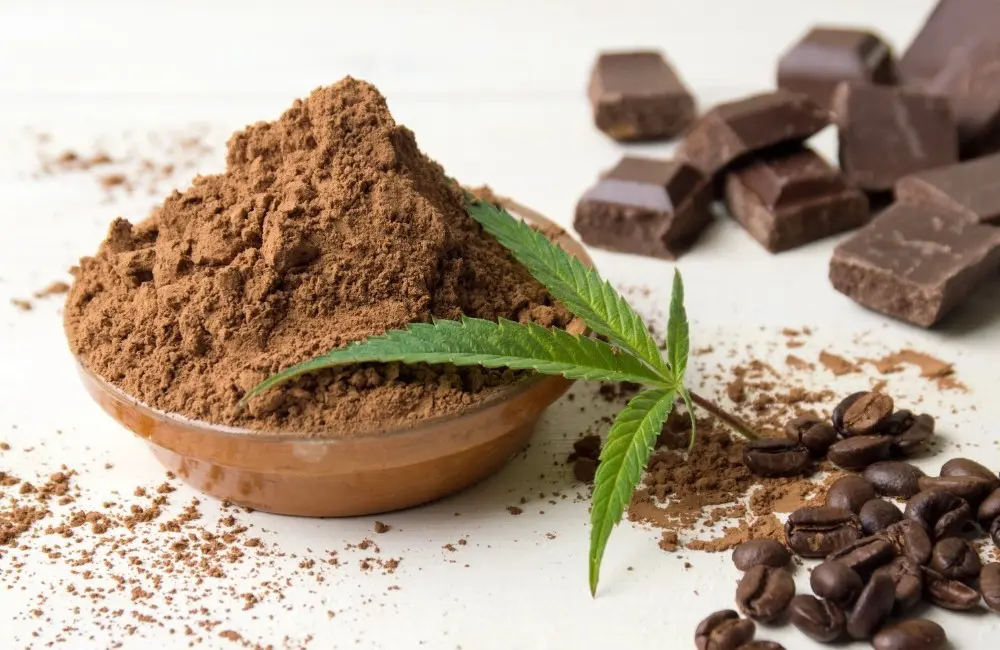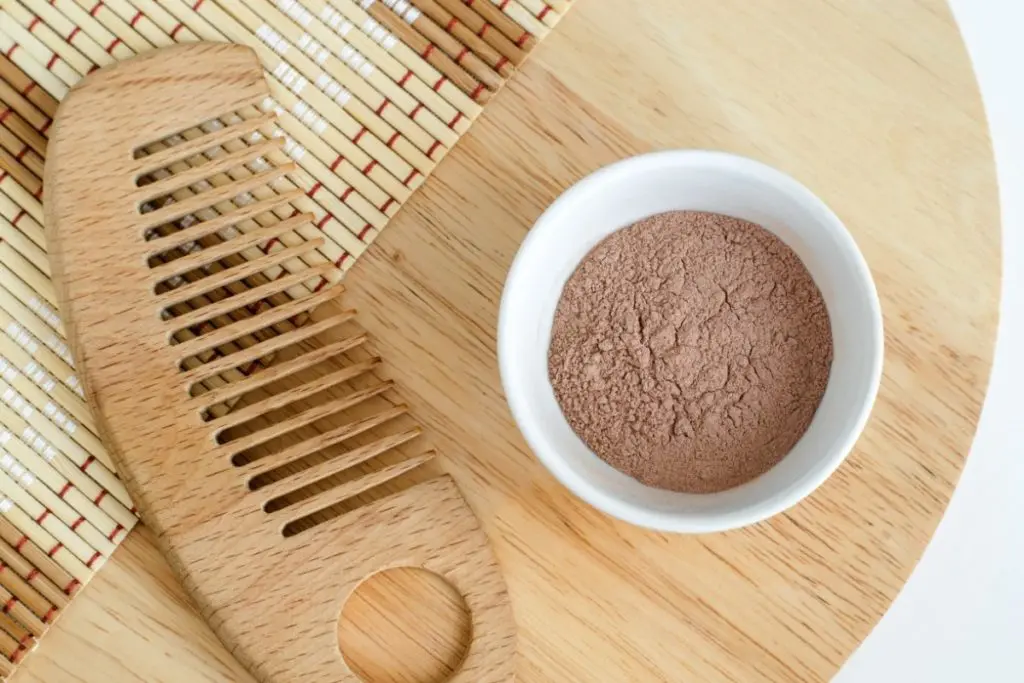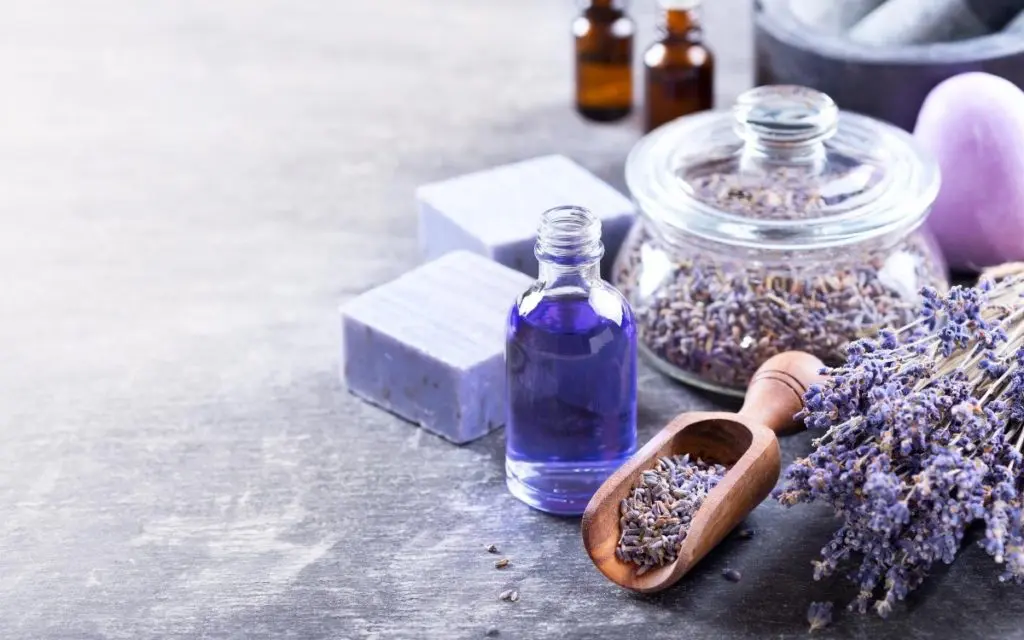In this article, we are zooming in on the basic differences between cacao and cocoa. Both have numerous benefits that are the preference in different forms of cooking and baking. They also have some key nutritional elements that we will discuss. The contest between cacao vs. cocoa comes down to processing. Let’s dive into the how’s and why’s of these favorite ingredients.
Cacao & Cocoa in the Real World
You’re wandering the baking aisle looking for the ingredients to your favorite brownie recipe. Maybe you’re standing in front of the chocolate bar display. And then you see it – cacao or cocoa. Perhaps listed with a percentage, or maybe they’re in powder form, butter form, or even in nib form (whatever that is).
Either way, you have no idea what it means. Is cacao the same as cocoa? The answer is no, unfortunately. The difference between cocoa and cacao might seem pretty minuscule on the surface. Looking into flavor, consistency, and nutritional value reveals that they are very much not the same. So how do you know which one you should use? Let’s start with the basics.
Cocoa & Cacao: What Are They?
As you probably already know (or could at least guess), cocoa and cacao are both found in chocolate products.
They both come from the seeds of the cacao plant. As these seeds are processed, different stages leave us with different products. Through this, we get things like whole beans, butter, liquor, and powder.
The walk-through is a little lengthy, but bear with us. We will make understanding the difference between cocoa and cacao much easier.
From Bean to Candy Bar
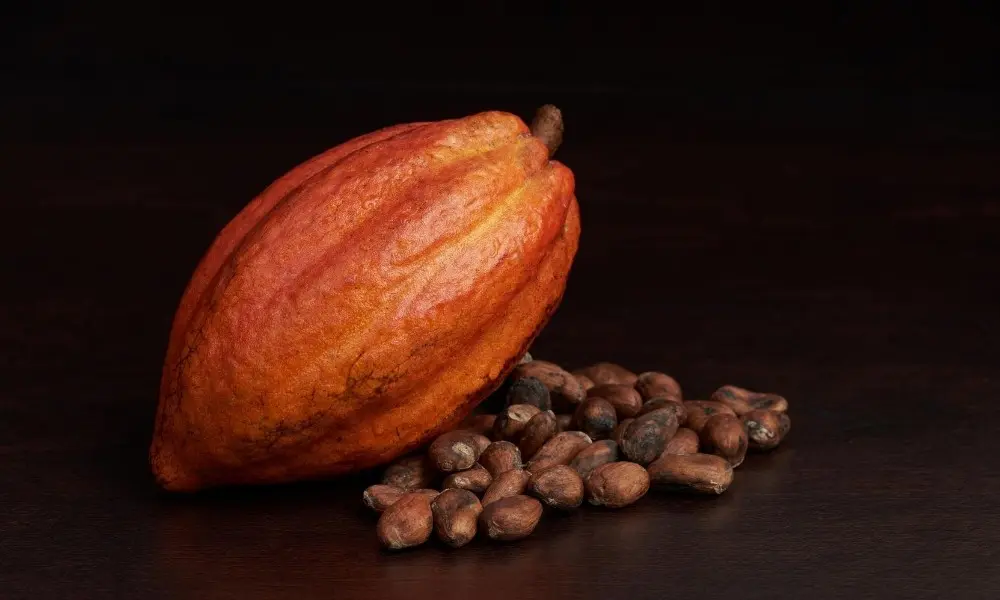
Seed pods (the fruit) are picked from the cacao plant and broken open to reveal the seeds (we call them beans). The pod rinds get disposed of, and the pulp and beans are left out to ferment. During this process, the pulp liquefies and drains away, leaving just the beans. These beans then dry and ferment a second time. Sometimes they need roasting before they are consumable. When you purchase cocoa or cacao beans, this is what you’re buying.
From there, the beans are de-shelled, leaving what we call the nibs. You can purchase nibs at this stage, just like you would buy beans. Nibs are often a favorite as decorations for cakes and desserts. Also, they are the main ingredient in chocolate.
These de-shelled nibs are next ground down to a relatively fine powder (not the powder you purchase for cooking). This powder is then melted down into a liquid, referred to as the liquor. Despite this name and the earlier fermenting process, there’s no actual alcohol in chocolate liquor.
A Shot of Chocolate Liquor?
How finely ground the nibs are + how long the resulting powder is left to melt = how smooth the liquor will be. The smoother, the better.
Chocolate liquor purchased at this stage is also known as baker’s chocolate. It usually comes in solid or paste.
Next, the melted liquor is pressed and strained to separate the oil from the solids. These solids are dried versions available in two forms. One as a compressed brick that looks a little chalky and dry. The alternative as ground down into a fine powder (unsweetened cocoa/cacao powder). The powder is sometimes partially sweetened with sugars.
The strained oil from this process cools into blocks of yellow-colored butter, known as cocoa butter. This ingredient often appears in lotions, foods, and everything in between. But wait! That doesn’t explain the whole cacao vs. cocoa thing. What makes them different?
The Key Difference
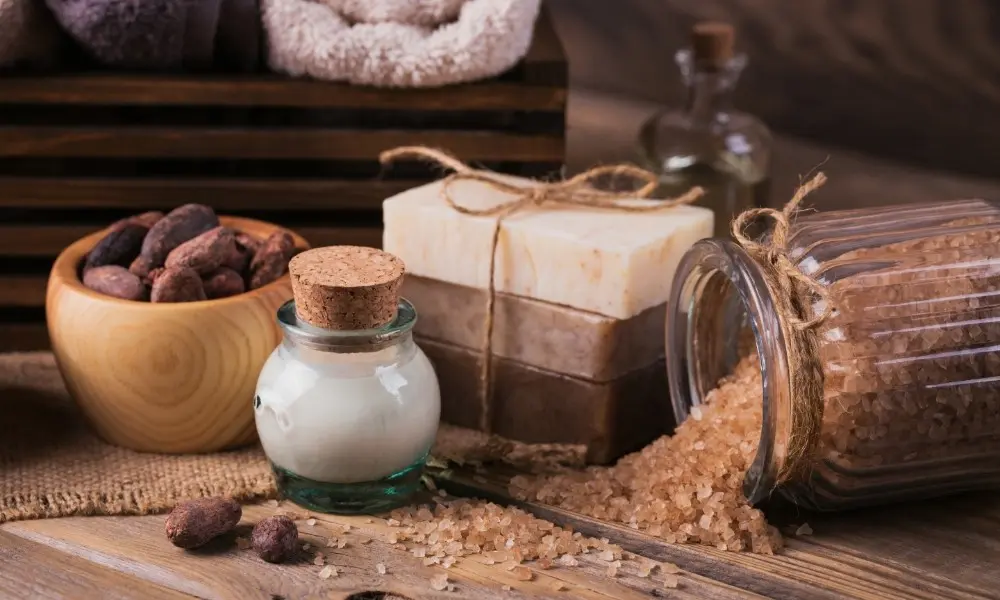
The answer is roasting. Remember when we said that the beans sometimes get roasted? Cocoa products come from beans that roast after the fermenting and drying process. These roasted beans are also processed at higher temperatures if they are dried, ground, or liquified. Higher temps enrich the chocolate flavor and add some sweetness to the otherwise bitter taste.
Cacao products, on the other hand, come from un-roasted beans. These beans are processed at lower temperatures if they are dried, ground, or liquified.
Cacao vs. Cocoa: An In-Depth Comparison
So roasting and processing temperature — that’s what makes cocoa different from cacao. But what difference does that difference actually make? That’s what you’re here to find out, so let’s dive in.
Cacao vs. Cocoa Taste
As we mentioned above, cocoa beans are roasted to enhance that trademark “chocolate” flavor and slightly sweeten the cacao plant’s inherent bitterness. In general, cocoa products will be sweeter (or at least less bitter) than cacao products. Un-roasted cacao products have all their original bitterness. They still have a rich flavor, but it may not be true to the stereotypical chocolate flavor. When mixed into other foods, cocoa products will really help the chocolate note shine through. More intense flavors might mask cacao products.
Verdict: Cocoa products are generally less bitter and more chocolatey than cacao.
Winner: Cocoa
Cacao vs. Cocoa Nutrition
The raw bean of the cacao plant is rich in flavanols and enzymes. Cacao is known for its antioxidant, mood-enhancing, and heart-healthy properties. The beans are also full of iron, fiber, and magnesium. Some studies show cacao to mitigate the risk of diabetes, hypertension, inflammation, and other diseases. However, some of these claims are debatable.
Unfortunately, these nutrients can be lost during processing, especially if it involves high heat. Since cocoa products come from beans that have been roasted and processed at higher temperatures, they are generally less nutritional than cacao products. The benefits listed above are rarely associated with them. Cacao products are not roasted and are processed without heat, leaving them much closer to raw cacao and all the benefits associated. Note that this doesn’t make cocoa products unhealthy, so more as it just makes cacao products extra-nutritional.
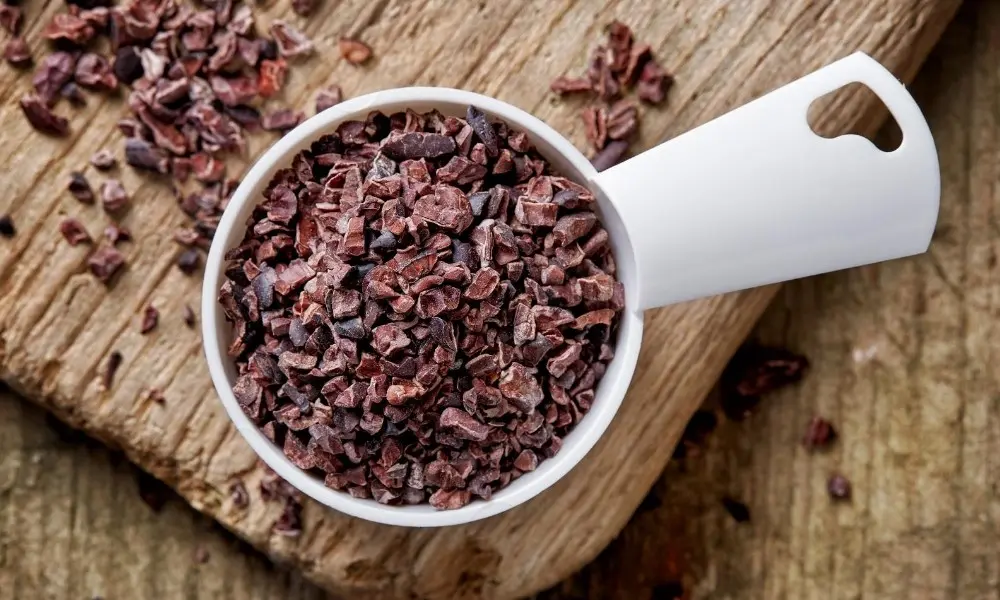
The loss of nutrients during processing means that products from earlier in the process are higher in nutritional value than earlier stage products. For example, cocoa and cacao nibs are much higher in nutritional value than their respective powders, because nibs receive less processing than powders. The nutritional loss also applies to post-production processing, like when you bake the powder into a cake or melt the sugar and other ingredients into the liquor to make chocolate. Once cocoa and cacao beans go through processing down to butter, the difference in their nutritional content is slim.
Verdict: Cocoa products have fewer nutrients than cacao products due to roasting and high-heat processing.
Winner: Cacao
Cacao vs. Cocoa Nibs
Cacao and cocoa nibs are both popular, but for different reasons. Cocoa nibs (less bitter and more chocolatey) are a preference for decorations on cakes and other desserts. They are often the nib of choice in any recipe. Cacao nibs (more bitter and less chocolatey) receive praise for their multitude of health benefits. They are generally a preference in authentic Mexican cooking.
Verdict: Using cacao nibs vs. cocoa nibs depends on what you’re using them for. Both have suitable applications.
Winner: Tie
Cacao vs. Cocoa Liquor
Cacao and/or cocoa liquor (sometimes referred to as baker’s chocolate) is a dessert recipe favorite. Since creating a dessert usually involves adding certain amounts of sweeteners, cacao liquor is generally a preference. Cocoa liquor has the added sweetness of roasting, which can impact the final flavor of the dessert. However, cocoa liquor is usually the liquor of choice for making chocolate, as the sweetness is desirable.
Cacao liquor is a preference when it comes to savory recipes. It retains its original health benefits and has the bitter taste associated with raw cacao.
Verdict: While cocoa liquor is in everyday chocolate and chocolate candies, cacao liquor is best for dessert recipes and savory recipes. This is thanks to the bitter taste and high nutritional content.
Winner: Cacao
Cacao vs. Cocoa Powder
Cocoa powder is less bitter than cacao powder and often has a noticeably darker color. While both are suitable for baking and cooking, cacao powder has a higher nutritional content and a natural, unsweetened flavor that makes it popular with professional chefs and bakers. When it comes to decorations or dustings on a variety of foods and desserts, cocoa powder is best due to its slightly sweeter flavor.
Verdict: Cacao powder is generally the winning choice for baking and cooking. Cocoa powder, though suitable for baking and cooking, is usually best for final ornamentation.
Winner: Tie
Cacao vs. Cocoa Butter
Both cacao butter and cocoa butter are popular for cooking and beauty applications. Cocoa products usually have a more chocolatey flavor. However, cacao butter is famous for its stronger chocolate scent. This makes it a desirable trait for lotions and skincare products. When used topically, both butters have the same benefits, with smell being the only noticeable difference. When using these for cooking, both classify as a vegetable oil perfect for searing and sautéing and are often used in desserts. Cacao products start with a higher nutrient content than cocoa products. However, cacao butter is not much more nutritional at this stage in the process than cocoa butter.
Verdict: Cacao and cocoa butter have the same applications, a relatively similar nutrient content, and no noticeable differences beyond scent.
Winner: Tie
Which is the Best?
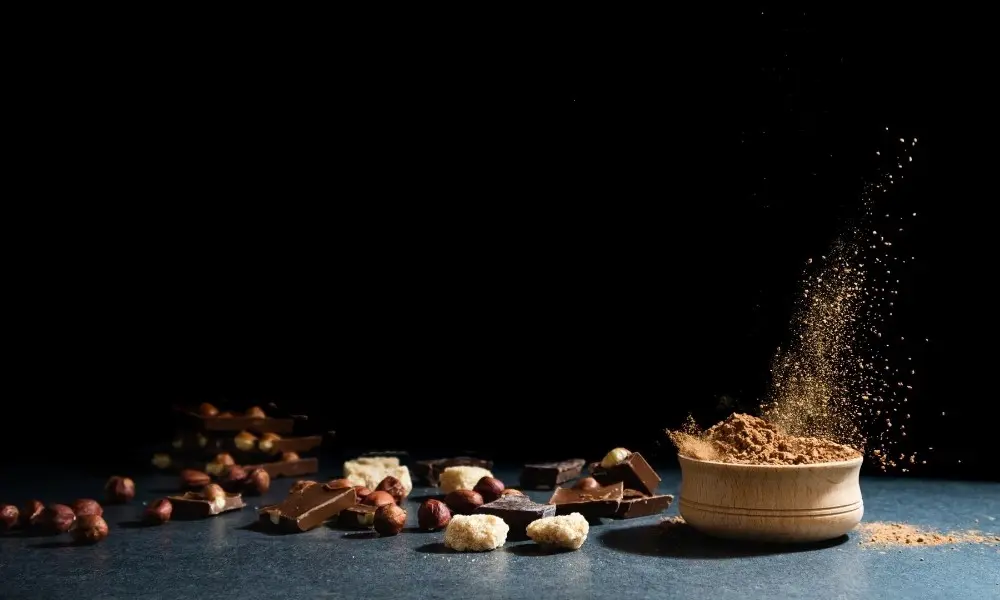
Both cacao and cocoa products have their preferred uses. The winner depends on what you’re trying to do or cook, and whether the health benefits are a deciding factor. Once they process down to butter, both cocoa and cacao have similar nutrient contents, making them the same for all intents and purposes. At earlier stages in the process, however, cacao has a plethora of health benefits.
Keep in mind that cacao products are usually a little more expensive than cocoa products, as low-heat processing requires more effort. In addition, cacao products feature in marketing as vegan, all-natural, and raw. As such, they usually sell at a higher cost.
Further Reading
